Fujifilm X-H1 vs X-T2: Specs compared
How does Fujifilm's flagship X-series camera compare with its X-T2 brother? We take a look at what's the same and what's different
Fuji X-H1 vs X-T2: AF system
Why you can trust Digital Camera World
- Fujifilm X-H1: Intelligent hybrid AF (TTL contrast AF/ TTL phase detection AF)
- Fujifilm X-T2: Intelligent hybrid AF (TTL contrast AF/ TTL phase detection AF)
Both bodies are equipped with hybrid AF systems that combine contrast- and phase-detect AF technologies, although Fujifilm claim its AF system has ‘evolved’ on the X-H1. Specifically, it claims the new model to be better at tracking subjects than previous cameras, and it can confidently lock on target down to -1.0 EV, next to the X-T2's -0.5EV rating.
The X-H1 also utilises 60 different data analysis points to make for its more accurate, high-performance AF tracking, although this also helps it to work better with low-contrast and high-frequency subjects.
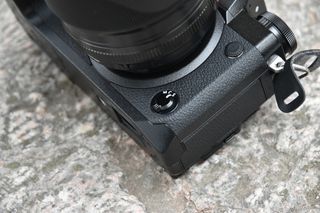
As we'd expect, both cameras deliver the standard user-selectable options of single AF, continuous AF or manual focus. There’s also the ability to manually select the AF point via the focus lever (on both models) or touch screen (only on the X-H1), or to keep your options open and shoot wide using tracking AF. These are features we’d expect to see on any semi-pro or professional model.
Overall, the X-H1's system does appear to be marginally improved, but whether you will appreciate these benefits depends on what it is you shoot. If you tend to shoot in low light or rely on focus tracking, the X-H1 might be a better match. Otherwise, the X-T2 looks like it will deliver much the same performance.
Fuji X-H1 vs X-T2: Viewfinder and LCD
- Fujifilm X-H1: 0.5in EVF with 3.69million dots and 0.75x magnification; 3-inch, tilting, touchscreen LCD with 1.04million dots
- Fujifilm X-T2: 0.5in EVF with 2.36million dots and 0.77x magnification; 3-inch, tilting, touchscreen LCD with 1.04million dots

For those who like to shoot with a camera up against their face with an eye to its viewfinder, the X-H1 is a dream. The 3.69million dot resolution of its OLED EVF with 100% coverage of the frame renders images so-life like, that it’s easy to forget you’re not shooting with an optical viewfinder.
A built-in eye sensor that automatically activates the EVF is another asset you don’t notice after a while – but that seamlessness is completely as you’d want when concentrating on your subject, not the camera’s own features.
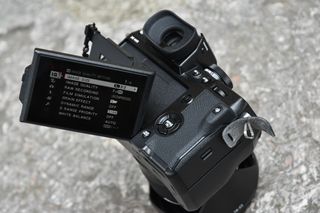
The X-T2 also offers an OLED electronic viewfinder, exactly the same size at 0.5 inches, and again with 100% coverage, though at a slightly lower 2.36million-dot resolution – not that you’d notice unless comparing them side-by-side. Interestingly, its magnification is a slightly higher 0.77x (in 35mm terms) against the X-H1's 0.75x.
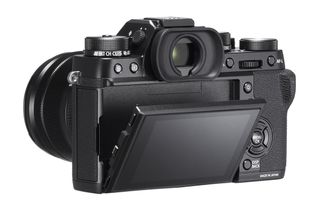
The biggest difference regarding the cameras' LCD screens is that the X-H1 offers two: one on the top plate that shows shooting information and one one the rear. The rear plate screen on the X-T2 and X-H1 is the standard 3in LCD, offering 1.04million dots of resolution and shaped to the 3:2 aspect ratio. Both screens can be usefully tilted in three directions, but only the X-H1's screen is sensitive to touch.
Is a touch screen – or the lack of one – a deal breaker? We’d say no, but again it’s an occasionally handy extra to have. Even so, this, together with the top-plate LCD and the slightly better resolution EVF of the X-H1 again edge it ahead of the X-T2.
Fuji X-H1 vs X-T2: Build and design
- Fujifilm X-H1: Dust- and water-resistant, magnesium alloy body, 94 seals. Capable of operating in temperatures as low as -10°C (or +40°C)
- Fujifilm X-T2: Dust- and water-resistant, magnesium alloy body, 63 seals. Capable of operating in temperatures as low as -10°C (or +40°C)
According to Fujifilm, the X-H1 boasts a robust new body design, which is tougher than its X-series predecessors, with 25% thicker magnesium alloy. Also offering strength is its ribbed frame, with 94 weather-sealed points to help stop anything getting in that shouldn't.
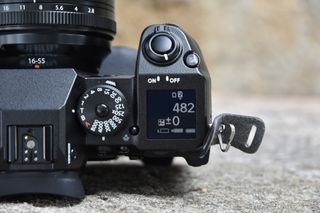
In addition, the grain size of the exterior camera coating has been tweaked to improve scratch resistance, while internally there's a new shutter shock absorption mechanism. There's also a new feather touch shutter button that responds to delicate shutter release actions so users don't miss that moment, as well as that substantial grip and new top-plate LCD.
The X-H1 body’s dimensions are a relatively chunky 139.8 x 97.3 x 85.5mm, at a weight of 673g including battery and memory card. In short, the X-H1 is being presented more towards the professional market than cameras like the X-Pro2 and X-T2.
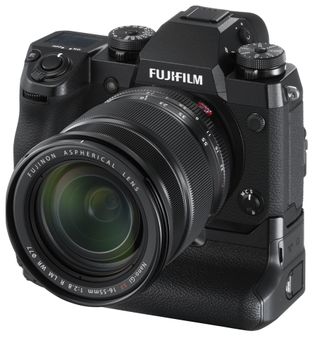
In fairness, the X-T2’s magnesium alloy body is similarly dust-resistant and weather-sealed, albeit with 63 seals rather than the 94 of the X-H1. It can also work in temperatures as low as -10°C. Weather sealing likewise extends to compatible lenses and its own optional Vertical Power Booster grip.
The X-T2’s dimensions are 132.5 x 91.8 x 49.2mm, with a weight of 507g with the battery and memory card inserted. So, the X-T2 is clearly the better choice if you're looking to travel light and without your kit being a burden.
Both cameras follow the button- and dial-rich, classic retro design on which its manufacturer’s X series has built its deserved reputation.
Fujifilm X-H1 vs X-T2: Battery life
- Fujifilm X-H1: Up to 310 frames per charge of its NP-W126S lithium ion battery (normal mode)
- Fujifilm X-T2: Up to 340 frames per charge of its NP-W126S lithium ion battery (normal mode)
Partly because of their smaller form factor and smaller battery units, mirrorless cameras are never as good for the amount of pictures from a single charge of their lithium-ion cells as their DSLR equivalents. That being said, the performance of these two Fujifilms is on a par with that of mirrorless rivals.
It’s worth noting from the off, that the cameras use the same NP-W126S lithium ion battery. The per-shot performance when used with the X-T2 is however slightly better that with the X-H1, by approximately 30 frames in the X-T2’s favour.
With NP-W126S lithium ion battery included, the X-T2 offers up to 340 frames per charge in normal shooting mode, up to 40 minutes of 4K shooting, or 50 minutes of Full HD video capture. Compatible accessories released alongside the X-T2 include VPB-XT2 vertical power booster, upping capture speed from 8fps to 11fps and providing enough juice for 1000 shots (if counted in tandem with the battery already in the camera) and allowing for up to 30 minutes of continuous 4K video.
The actual battery life of the X-H1 when shooting 4K-video is 35 minutes or it’s 45 minutes for Full HD video capture. Buying the camera with its optional vertical power booster grip improves the X-H1’s performance obviously, upping the total amount of shots to be captured to a respectable 900, putting it on a par with DSLRs (without battery grip) in its price bracket.
Verdict
It’s very clear from the above that both Fujifilm cameras are very much two peas from the same manufacturer’s pod. Key advantages for the X-H1 include image stabilisation as standard, a higher-resolution viewfinder, a touchscreen, top-plate LCD and fleshed-out video specs, along with smaller features such as Flicker detection and Bluetooth.
The X-T2, meanwhile, benefits from a smaller, lighter and cheaper body, together with a slightly higher viewfinder magnification, marginally longer battery life and marginally better burst depth.
Ultimately then, if you’re approaching these two cameras afresh without having previously owned an X-series camera, the X-H1 would appear to be the one to go for if you can stump up the premium. However, if you already own an X-T2, we’d argue that there isn’t sufficiently enough about the X-H1 as a standalone offering to warrant the expense of an upgrade, unless very slight enhancements as regards video make it a professional must for you.
Read more: Fujifilm X-H1 review
- 1
- 2
Current page: AF system, viewfinder, LCD, battery life and verdict
Prev Page Sensor, processor, video features and burst shootingGet the Digital Camera World Newsletter
The best camera deals, reviews, product advice, and unmissable photography news, direct to your inbox!
Gavin has over 30 years’ experience of writing about photography and television. He is currently the editor of British Photographic Industry News, and previously served as editor of Which Digital Camera and deputy editor of Total Digital Photography.
He has also written for a wide range of publications including T3, BBC Focus, Empire, NME, Radio Times, MacWorld, Computer Active, What Digital Camera and the Rough Guide books.
With his wealth of knowledge, Gavin is well placed to recognize great camera deals and recommend the best products in Digital Camera World’s buying guides. He also writes on a number of specialist subjects including binoculars and monoculars, spotting scopes, microscopes, trail cameras, action cameras, body cameras, filters and cameras straps.
